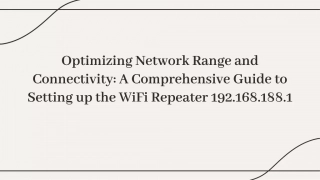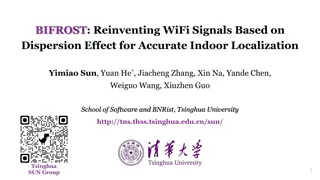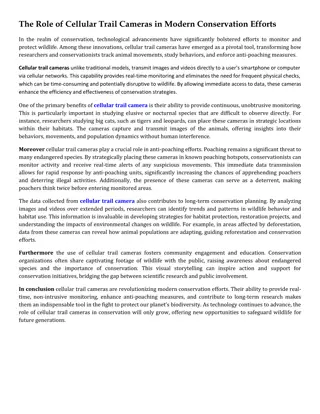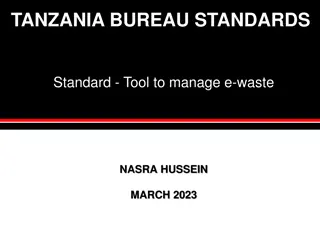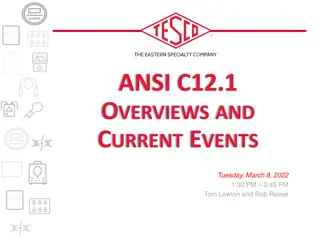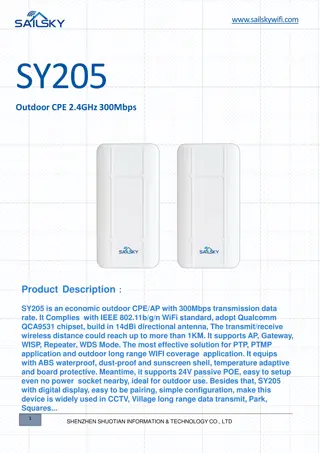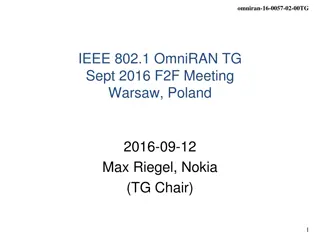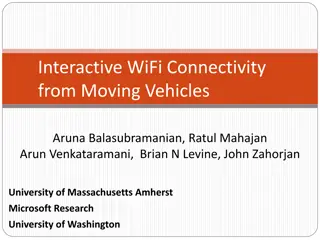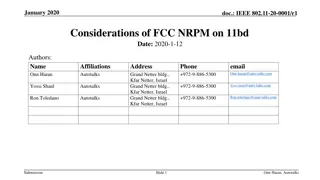
Future of Wi-Fi: Evolution through IEEE Standards
Explore the progression of Wi-Fi technology through IEEE standards, from the early days of 802.11 to the advancements in throughput, MIMO, and beamforming. Learn about the history and future techniques shaping the wireless networking landscape.
Download Presentation

Please find below an Image/Link to download the presentation.
The content on the website is provided AS IS for your information and personal use only. It may not be sold, licensed, or shared on other websites without obtaining consent from the author. If you encounter any issues during the download, it is possible that the publisher has removed the file from their server.
You are allowed to download the files provided on this website for personal or commercial use, subject to the condition that they are used lawfully. All files are the property of their respective owners.
The content on the website is provided AS IS for your information and personal use only. It may not be sold, licensed, or shared on other websites without obtaining consent from the author.
E N D
Presentation Transcript
Wi-Fi - IEEE Standards and the future of Wi-Fi Mingnan Yuan Department of Electrical and Computer Engineering Auburn University March 9, 2016
Outline History of IEEE 802.11 WLAN Very high throughput signal field Multiple-input and multiple-output BEAMFORMING Future Techniques
History of IEEE 802.11 WLAN 802.11 defined only the data rate of 1 or 2 Mb/s operated at 2.4 GHz band using. IEEE expanded on the original 802.11 standard in July 1999, creating the 802.11b specification. 802.11b supports bandwidth up to 11 Mbps. 802.11b uses the same unregulated radio signaling frequency (2.4 GHz) as the original 802.11 standard. 802.11g attempts to combine the best of both 802.11a and 802.11b. 802.11g supports bandwidth up to 54 Mbps, and it uses the 2.4 GHz frequency for greater range. Industry standards groups ratified 802.11n in 2009 with specifications providing for up to 300 Mbps of network bandwidth. 802.11ac bandwidth rated up to 1300 Mbps on the 5 GHz band.
History of IEEE 802.11 WLAN 802.11ac chooses a mixed-mode format with new portion. This amendments enable an efficient preamble design for MIMO operation. After 20 m sec long legacy portion of the preamble, more control signals are defined in very high throughput signal field (VHT-SIG) for 11ac.
Multiple-input and multiple-output MIMO is a method for multiplying the capacity of a radio link using multiple transmit and receive antennas to exploit multipath propagation. MIMO has become an essential element of wireless communication standards. With a new MU-MIMO feature introduced in 802.11ac, the VHT-SIG should indicate necessary information for recipients to process MUMIMO packets.
BEAMFORMING Beam-forming is one of advanced MIMO techniques to enhance the throughput significantly. Antenna coordination for directional beams is enabled with an aid of channel state information (CSI) feedback, and thus it is essential to efficiently deliver such information from a beam-formee to a beam-former.
Future Techniques Sub-band orthogonal multiplexing division multiple access (OFDMA) UPLINK MU-MIMO Full duplex transmission
References [1] B.L, 2006, Achieving optimal performance in IEEE 802.11 wireless LANs with the combination of link adaptation and adaptive backoff [2] Xu Bao, 2014, Protocol Design and Capacity Analysis in Hybrid Network of Visible Light Communication and OFDMA Systems [3] Joonsuk Kim, 2015, 802.11 WLAN: History and New Enabling MIMO Techniques for Next Generation Standards [4] Moussa Ayyash, 2016, Coexistence of WiFi and LiFi towards 5G: Concepts, Opportunities, and Challenges [5] Nam Nguyen, 2015, A Novel WLAN Roaming Decision and Selection Scheme for Mobile Data Offloading [6] Sharad S Wagha, 2015, Performance Evaluation of IEEE 802.15.4 Protocol Under Coexistence of Wi-Fi 802.11b


